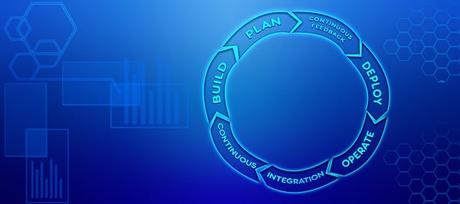In the rapidly evolving world of Human Resource Management (HRM), the development and implementation of software solutions have become essential for organizations seeking to optimize their HR functions. Navigating the complex and dynamic landscape of HRM software development requires a deep understanding of the latest trends, technologies, and best practices. In this article, we will explore the key components of HRM software development landscapes, delving into the intricacies of creating innovative solutions that enhance efficiency, productivity, and decision-making within HR departments.
Table of Contents
- 1. Overview of HRM Software Development Evolution
- 2. Key Features and Functions of Modern HRM Software
- 3. Emerging Trends in HRM Software Development
- 4. Challenges Faced by Developers in Creating HRM Software
- 5. Best Practices for Designing Effective HRM Software Solutions
- 6. The Future of HRM Software Development: Predictions and Opportunities
- Q&A
1. Overview of HRM Software Development Evolution
HRM Software Development Evolution has undergone significant changes over the years, adapting to the growing needs of organizations and the advancements in technology. With the rise of digital transformation, HRM software has evolved from basic tools for managing employee data to sophisticated platforms that enable comprehensive HR functions.
Key milestones in the evolution of HRM software development include the shift from on-premises solutions to cloud-based systems, the integration of artificial intelligence and machine learning capabilities, and the focus on user experience and mobile accessibility. As organizations continue to prioritize efficient and effective HR operations, the development of HRM software is expected to further evolve to meet the changing needs of the workforce.

2. Key Features and Functions of Modern HRM Software
One key feature of modern HRM software is its integration with other systems, such as payroll and time-tracking software. This allows HR professionals to streamline processes and have all relevant data in one centralized location. Additionally, modern HRM software often includes customizable reporting tools, enabling HR departments to generate detailed reports on various metrics like employee performance, turnover rates, and training effectiveness.
Another important function of modern HRM software is employee self-service portals. Through these portals, employees can access and update their personal information, request time off, and view company policies. This not only empowers employees to take control of their own HR needs but also reduces the administrative burden on HR staff. Additionally, many HRM software offer mobile access, allowing employees to conveniently access HR services from anywhere at any time.
3. Emerging Trends in HRM Software Development
In the constantly evolving field of HRM software development, several emerging trends are shaping the way organizations manage their human resources. These trends are revolutionizing the way HR departments operate and are leading to increased efficiency and effectiveness in managing employees.
Some of the key include:
- Integration of artificial intelligence and machine learning capabilities to automate repetitive tasks and provide data-driven insights.
- Enhanced focus on employee experience by personalizing HR solutions to fit the needs and preferences of individual employees.
- Utilization of data analytics to forecast trends, identify potential issues, and make strategic decisions based on empirical evidence.
- Mobile-first approach to ensure accessibility and convenience for both employees and HR professionals.
- Increased emphasis on cybersecurity to protect sensitive HR data from cyber threats and ensure compliance with data protection regulations.
4. Challenges Faced by Developers in Creating HRM Software
Developers face several challenges when creating HRM software due to the complexity and specific requirements of the human resources domain. Some of the key challenges include:
- The need for seamless integration with existing HR systems and databases to ensure data consistency and accuracy.
- Developing customizable features to accommodate different organizational structures and processes.
- Ensuring compliance with data protection regulations such as GDPR to protect sensitive employee information.
- Implementing robust security measures to prevent data breaches and unauthorized access to HR data.
Another challenge for developers is the constant need to update and improve HRM software to keep up with evolving HR practices and technologies. This requires ongoing research and development efforts to stay ahead of the curve and provide users with the latest tools and features to enhance their HR operations. Additionally, developers must also consider the user experience and design intuitive interfaces that are easy to navigate and use, which can be a challenge when dealing with complex HR processes and workflows.
5. Best Practices for Designing Effective HRM Software Solutions
When designing HRM software solutions, it is crucial to prioritize user experience and functionality. The software should be intuitive and user-friendly, allowing HR professionals to easily navigate through different modules and features. Implementing a clean and organized design will enhance overall usability and productivity.
Another best practice is to ensure that the software is customizable to cater to the unique needs of each organization. This includes the ability to add or remove modules, customize workflows, and generate custom reports. Providing this level of flexibility will enable HR departments to tailor the software to their specific requirements, ultimately leading to more efficient and effective HR management.
6. The Future of HRM Software Development: Predictions and Opportunities
As we look towards the future of HRM software development, several key predictions and opportunities emerge:
Integration with AI and Machine Learning: HRM software will increasingly leverage AI and machine learning algorithms to automate routine tasks, identify patterns in employee data, and provide insights for strategic decision-making.
Enhanced Employee Experience: Future HRM software will focus on enhancing the overall employee experience, with features such as personalized learning and development plans, employee feedback mechanisms, and real-time performance tracking.
Q&A
Q: What are some key trends in HRM software development landscapes?
A: Some key trends in HRM software development landscapes include the shift towards cloud-based solutions, integration with AI and machine learning technologies, and a focus on user-centric design and mobile accessibility.
Q: How important is data security in HRM software development?
A: Data security is critical in HRM software development, as these systems often contain sensitive employee information. It is essential for developers to implement robust security measures to protect this data from potential breaches.
Q: What are some common challenges faced by HRM software developers?
A: Some common challenges faced by HRM software developers include ensuring compatibility with existing systems, addressing the complex regulatory environment surrounding HR data, and balancing the need for customization with scalability.
Q: How can HRM software developers stay ahead of the curve in this rapidly evolving industry?
A: HRM software developers can stay ahead of the curve by staying informed about emerging technologies and trends, fostering a culture of innovation within their teams, and actively seeking feedback from users to continuously improve their products.
Q: What role does user experience design play in HRM software development?
A: User experience design plays a crucial role in HRM software development, as it directly impacts the usability and effectiveness of the system. Developers must prioritize intuitive interfaces, streamlined workflows, and responsive design to ensure a positive user experience.
In conclusion, understanding the evolving landscape of HRM software development is crucial for organizations looking to leverage technology to enhance their human resource management processes. By exploring the various trends, challenges, and opportunities in this field, businesses can make informed decisions and stay ahead of the curve in an increasingly digital world. As technology continues to transform the HRM landscape, it is essential for organizations to stay informed, adapt, and invest in cutting-edge solutions to drive efficiency, productivity, and success. Thank you for exploring HRM software development landscapes with us. Stay tuned for more insights and updates on this dynamic and ever-evolving field.
The post Exploring HRM Software Development Landscapes first appeared on dallaswebsite.design.
